The American Civil War bibliography comprises books that deal in large part with the American Civil War. There are over 60,000 books on the war, with more appearing each month. [1] There is no complete bibliography to the war; the largest guide to books is over 40 years old and lists over 6,000 titles selected by leading scholars. [2] Many specialized topics such as Abraham Lincoln, [3] women, [4] and medicine [5] have their own lengthy bibliographies. The books on major campaigns typically contain their own specialized guides to the sources and literature. The most comprehensive guide to the historiography annotates over a thousand titles. [6]
For the history of North and South see Union (American Civil War) and Confederate States of America and the many articles linked there.
For a guide to the bibliography see:
For a guide to web sources see:
Note: This article forms part of Bibliography of the American Civil War.

The Confederate States of America (CSA), commonly referred to as the Confederate States (C.S.), the Confederacy, or the South, was an unrecognized breakaway republic in the Southern United States that existed from February 8, 1861, to May 9, 1865. The Confederacy comprised eleven U.S. states that declared secession and warred against the United States during the American Civil War. The states are South Carolina, Mississippi, Florida, Alabama, Georgia, Louisiana, Texas, Virginia, Arkansas, Tennessee, and North Carolina.

The Confederate States Army, also called the Confederate Army or the Southern Army, was the military land force of the Confederate States of America during the American Civil War (1861–1865), fighting against the United States forces to win the independence of the Southern states and uphold and expand the institution of slavery. On February 28, 1861, the Provisional Confederate Congress established a provisional volunteer army and gave control over military operations and authority for mustering state forces and volunteers to the newly chosen Confederate president, Jefferson Davis. Davis was a graduate of the U.S. Military Academy, and colonel of a volunteer regiment during the Mexican–American War. He had also been a United States senator from Mississippi and U.S. Secretary of War under President Franklin Pierce. On March 1, 1861, on behalf of the Confederate government, Davis assumed control of the military situation at Charleston, South Carolina, where South Carolina state militia besieged Fort Sumter in Charleston harbor, held by a small U.S. Army garrison. By March 1861, the Provisional Confederate Congress expanded the provisional forces and established a more permanent Confederate States Army.
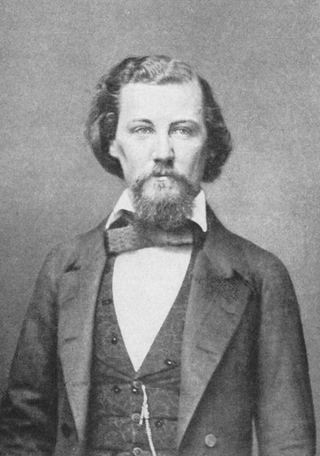
Clement Claiborne Clay, also known as C. C. Clay Jr., was a United States Senator (Democrat) from the state of Alabama from 1853 to 1861, and a Confederate States senator from Alabama from 1862 to 1864. His portrait appeared on the Confederate one-dollar note.
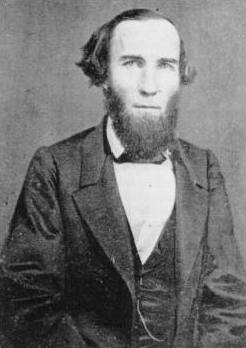
LeRoy Pope Walker was the first Confederate States Secretary of War.
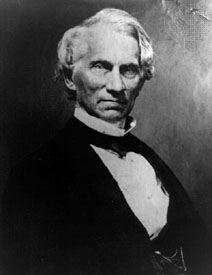
Christopher Gustavus Memminger was a German-born American politician and a secessionist who participated in the formation of the Confederate States government. He was the principal author of the Provisional Constitution (1861), as well as the founder of the Confederate financial system. As the first Confederate States Secretary of the Treasury, Memminger was the principal author of the economic policies of Jefferson Davis's administration.

James Chesnut Jr. was an American lawyer and politician, and a Confederate functionary.
The Confederate Secret Service refers to any of a number of official and semi-official secret service organizations and operations conducted by the Confederate States of America during the American Civil War. Some of the organizations were under the direction of the Confederate government, others operated independently with government approval, while still others were either completely independent of the government or operated with only its tacit acknowledgment.
Military leadership in the American Civil War was vested in both the political and the military structures of the belligerent powers. The overall military leadership of the United States during the Civil War was ultimately vested in the President of the United States as constitutional commander-in-chief, and in the political heads of the military departments he appointed. Most of the major Union wartime commanders had, however, previous regular army experience. A smaller number of military leaders originated from the United States Volunteers. Some of them derived from nations other than the United States.

Louisiana was a dominant population center in the southwest of the Confederate States of America, controlling the wealthy trade center of New Orleans, and contributing the French Creole and Cajun populations to the demographic composition of a predominantly Anglo-American country. In the antebellum period, Louisiana was a slave state, where enslaved African Americans had comprised the majority of the population during the eighteenth-century French and Spanish dominations. By the time the United States acquired the territory (1803) and Louisiana became a state (1812), the institution of slavery was entrenched. By 1860, 47% of the state's population were enslaved, though the state also had one of the largest free black populations in the United States. Much of the white population, particularly in the cities, supported slavery, while pockets of support for the U.S. and its government existed in the more rural areas.
The bibliography of the American Civil War comprises books that deal in large part with the American Civil War. There are over 60,000 books on the war, with more appearing each month. Authors James Lincoln Collier and Christopher Collier stated in 2012, "No event in American history has been so thoroughly studied, not merely by historians, but by tens of thousands of other Americans who have made the war their hobby. Perhaps a hundred thousand books have been published about the Civil War."

Mansfield Lovell was a major general in the Confederate States Army during the American Civil War. As military commander of New Orleans when the city unexpectedly fell to the Union Navy in 1862, Lovell was fiercely criticized by local citizens for failing to predict a naval invasion. The Confederate government also heaped blame on him, to deflect attention from their own error in leaving so few troops to defend the city. A Court of Enquiry later cleared him of charges of incompetence, but his reputation never recovered.
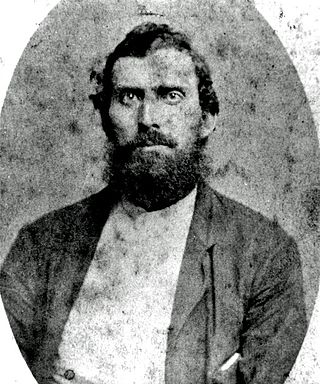
In the United States, Southern Unionists were white Southerners living in the Confederate States of America opposed to secession. Many fought for the Union during the Civil War. These people are also referred to as Southern Loyalists, Union Loyalists, or Lincoln's Loyalists. Pro-Confederates in the South derided them as "Tories". During Reconstruction, these terms were replaced by "scalawag", which covered all Southern whites who supported the Republican Party.

Alexander Watkins Terrell was an American lawyer, judge, planter, Confederate officer, and diplomat. He served as the U. S. Envoy to the Ottoman Empire and a Confederate military officer. He helped pass influential legislation including the Terrell Election Law, served as president of the Texas State Historical Association and on the board of regents for the University of Texas.
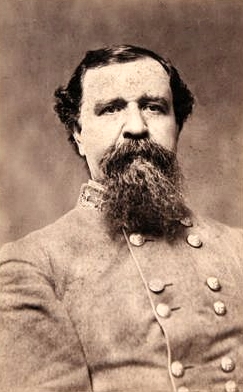
Thomas Hart Taylor was a Confederate States Army colonel, brigade commander, provost marshal and last Confederate post commander at Mobile, Alabama, during the American Civil War. His appointment as a brigadier general was refused by the Confederate Senate after Confederate President Jefferson Davis failed to nominate Taylor, apparently following Davis's appointment of Taylor to the rank. Nonetheless, Taylor's name is frequently found on lists and in sketches of Confederate generals. He was often referred to as a general both during the Civil War and the years following it. Before the Civil War, Taylor served as a first lieutenant in the 3rd Kentucky Volunteer Infantry Regiment during the Mexican–American War. After that war, he was a cattle driver, farmer and lawyer. After the Civil War, he was engaged in business in Mobile, Alabama for five years, and after returning to Kentucky, was a Deputy U.S. Marshal for five years and was chief of police at Louisville, Kentucky, for eleven years.
The following list is a bibliography of American Civil War Confederate military unit histories and are generally available through inter-library loan. More details on each book are available at WorldCat. For an overall national view, see Bibliography of the American Civil War. For histories of the Union, see Bibliography of American Civil War Union military unit histories. For a guide to web sources see: Carter, Alice E.; Jensen, Richard. The Civil War on the Web: A Guide to the Very Best Sites—Completely Revised and Updated (2003).
The American Civil War bibliography comprises books that deal in large part with the American Civil War. There are over 60,000 books on the war, with more appearing each month. There is no complete bibliography to the war; the largest guide to books is more than 50 years old and lists over 6,000 titles.
The American Civil War bibliography comprises books that deal in large part with the American Civil War. There are over 60,000 books on the war, with more appearing each month. There is no complete bibliography to the war; the largest guide to books is over 40 years old and lists over 6,000 titles.
In general the bibliography of the American Civil War comprises over 60,000 books on the war, with more appearing each month. There is no complete bibliography to the war; the largest guide to books is over 40 years old and lists over 6,000 titles selected by leading scholars. The largest guides to the historiography annotates over a thousand titles.